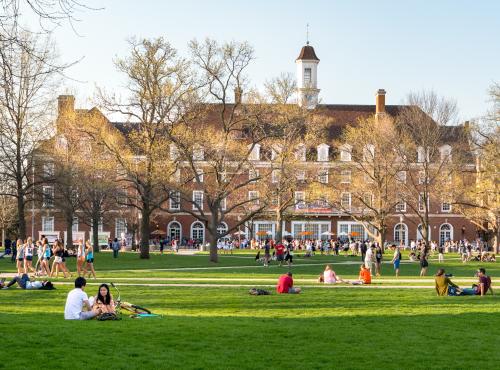This article is a summary of a recent study published in the Journal of Social Science Research.
Students from historically disadvantaged racial groups tend to be taught by lower quality teachers than their peers, with important consequences for long-term outcomes and societal inequality. A new study in the Journal of Social Science Research provides evidence that investing resources into policies that affect teacher hiring and mid-career transfers between schools can meaningfully close racial gaps in access to high-quality teachers.
Teacher quality has been shown to be an important driver of student outcomes and contributor to longstanding inequities in American education. There is broad agreement among policymakers and scholars that addressing teacher quality gaps (TQGs) has the potential to be a powerful means to close persistent racial gaps in educational opportunity. However, determining how to effectively do so has remained a challenge. To gain insight into the underlying processes that create TQGs and identify policies that might address them, my colleagues at the American Institutes for Research Center for Analysis of Longitudinal Data in Education Research and I recently conducted a study that uses sophisticated computational simulation to model how labor market processes contribute to TQGs.
Our analysis focuses on three labor market processes that affect the composition of teachers in public schools: hiring choices (i.e., where new teachers or those returning to the public education workforce take positions), teacher mobility (i.e., mid-career transfers between public schools), and attrition (i.e., leaving the public education workforce either temporarily or permanently). Our simulations suggest that hiring choices and teacher mobility between schools are pivotal to driving TQGs, far outweighing the impact of attrition from teaching. We find that ensuring that both inexperienced and experienced teachers are equally likely to teach in schools serving underrepresented minority (URM) students can have a large impact on closing TQGs. Our results suggest that ensuring hiring equity while also stemming the flow of experienced teachers from schools serving greater proportions of URM students to those with less could close the gaps completely and rapidly. These results suggest policies that target teacher recruitment to majority-URM schools—whether through new teacher hiring or transfers from other schools—should be a top priority for districts and states.
Untangling how the teacher labor market contributes to TQGs is more difficult than it might seem. That’s because teacher and school behaviors and outcomes are deeply interconnected. For example, when teachers switch jobs between schools, they affect the composition of the faculty in both places in ways that, in turn, could affect whether other teachers at either school decide to stay in their jobs or not. For example, an experienced teacher whose presence enhances the working environment in a school (e.g., though peer support and mentorship) choosing to leave might influence other teachers there to do the same. And when teachers leave a school, that school generally needs to hire a replacement. Across all these processes, schools and prospective teachers adjust their decisionmaking based on available jobs and applicant pools, which are then affected by those decisions.
To reflect the complexity of the teacher labor market, we employ agent-based modeling, a computational simulation approach that has been successfully used to guide policy in areas such as epidemiological response strategies, state public health department effectiveness, and criminal justice reform.
Informed by 13 years of data from Washington state, our simulation model represents the decisions and actions of hundreds of different schools and thousands of prospective and current teachers over time. In this study, we focus on a single type of TQG: exposure of URM students to novice teachers (i.e., those with less than five years of experience, when evidence suggests that early-career returns from experience on teacher performance tend to level off). Although we select this as our outcome of interest because it is readily observable in available data and comparable across settings, it also reflects meaningful historical racial disparities in education that have been extensively documented in previous literature and mirrors other forms of TQGs.
After gaining confidence in our model’s ability to reproduce observed real-world patterns in the teacher labor market (e.g., the extent to which schools serving more URM students are more likely to attract novice teachers and lose experienced ones), we conducted experiments to explore where there might be promising avenues for immediate policy action. Specifically, we use this model to simulate different hypothetical scenarios that allow us to examine the extent to which each of the three processes (hiring, mobility, and attrition) independently or synergistically contribute to TQGs.
Results from these simulation experiments suggest that hiring plays the largest individual role in the maintenance of TQGs and that simultaneously making both teacher hiring and mobility more equitable could substantially and rapidly close TQGs. As we note in our study, these findings suggest that policymakers and researchers should focus their efforts on identifying strategies to attract experienced teachers to disadvantaged schools and dissuade them from intra-district transfers to more advantaged schools. Some factors like teacher working conditions are clearly important for hiring, mobility, and attrition and are also notoriously difficult to quantify and predictably shift. However, there are other policy levers that affect individual processes in ways that may be more easily manipulable. For example, teacher collective bargaining agreements most directly influence teacher mobility, and district placement policies most directly influence teacher hiring. In the case of teacher hiring and mobility, incentives such as compensation or promotion opportunities designed to attract experienced teachers to disadvantaged schools and keep them from leaving could, if in place for multiple years, help ensure that all students have equal access to great teachers.
Our research represents what is, to the best of our knowledge, a novel methodological advance in understanding teacher labor markets. We see it as a productive step, but this is far from the final word on the subject. More broadly, we believe agent-based modeling could be a useful tool for understanding a host of emerging challenges facing American public education. These include—but are certainly not limited to—learning loss during the COVID-19 pandemic that widened existing disparities in student outcomes and the possibility that stresses on the profession may result in acute teacher shortages.
-
Acknowledgements and disclosures
The author thanks Chris Miller for editorial assistance and Mike DeArmond at AIR for helpful feedback.
The Brookings Institution is financed through the support of a diverse array of foundations, corporations, governments, individuals, as well as an endowment. A list of donors can be found in our annual reports published online here. The findings, interpretations, and conclusions in this report are solely those of its author(s) and are not influenced by any donation.






Commentary
How can we address racial inequalities in access to experienced teachers?
November 28, 2023